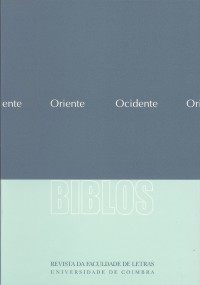Please use this identifier to cite or link to this item:
https://hdl.handle.net/10316.2/39970| DC Field | Value | Language |
|---|---|---|
| dc.contributor.author | Urbano, Carlota Miranda | - |
| dc.date.accessioned | 2016-11-17T10:35:19Z | |
| dc.date.accessioned | 2020-09-18T09:09:07Z | - |
| dc.date.available | 2016-11-17T10:35:19Z | |
| dc.date.available | 2020-09-18T09:09:07Z | - |
| dc.date.issued | 2004 | - |
| dc.identifier.issn | 0870-4112 | - |
| dc.identifier.issn | 2183-7139 (digital) | - |
| dc.identifier.uri | https://hdl.handle.net/10316.2/39970 | - |
| dc.description.abstract | In the 16th and 17th centuries, especially during periods in which persecution was intensified against crypto-Christians, the missionary experience of the Portuguese turned to early Christian martyrdom ideals and to a renewed sense of mission, in order to bear witness to Christian faith in the harshest situations. Within the Society of Jesus, the author argues, such ideals were particularly pertinent, not only on account of the Jesuits’ vast experience in the Eastern missionary field, but also because Jesuit spirituality was particularly apt to the development of martyrdom and mission ideals. As far as the cultural and literary environment inspired by Jesuits is concerned, such ideals were cultivated within neo-Latin poetry that was produced in the Jesuit High Schools. Among all literary genres, the epic genre (traditionally viewed as the most glorious genre) became the most apt and dignifying; the heroic epic genre was thus applied to celebrations of the new kind of hero, to wit, the missionaries and the martyrs. By shaping such heroic figures with epic literary features, and by addressing those heroic figures to a culturally sophisticated public, the Jesuit author sought to enhance the moral effectiveness of his literary work; in other words, his literary work was aimed at edifying the reader (mouere), so that the latter might reach the mystical ideal of mission and martyrdom, where death is understood as “profit”. | eng |
| dc.language.iso | por | - |
| dc.publisher | Faculdade de Letras da Universidade de Coimbra | - |
| dc.rights | open access | - |
| dc.title | ‘Morilucrum’: o ideal de missão e martírio e as missões jesuítas do Extremo Oriente nos Séc. XVI e XVII | por |
| dc.title.alternative | ‘Morilucrum’: the ideal of mission and martyrdom and the 16th and 17th centuries’ Far-Eastern Jesuit missions | eng |
| dc.type | article | - |
| uc.publication.collection | Biblos vol. II | - |
| uc.publication.firstPage | 131 | - |
| uc.publication.lastPage | 153 | - |
| uc.publication.location | Coimbra | - |
| uc.publication.journalTitle | Biblos | - |
| uc.publication.volume | 2 | por |
| dc.identifier.doi | 10.14195/0870-4112_2_4 | - |
| uc.publication.section | Artigos | - |
| uc.publication.digCollection | IP | - |
| uc.publication.digCollection | B1 | - |
| uc.publication.orderno | 4 | - |
| uc.publication.area | Artes e Humanidades | - |
| uc.publication.manifest | https://dl.uc.pt/json/iiif/10316.2/39970/217734/manifest?manifest=/json/iiif/10316.2/39970/217734/manifest | - |
| uc.publication.thumbnail | https://dl.uc.pt/retrieve/11280219 | - |
| uc.itemId | 71652 | - |
| uc.thumbnail.uri | https://dl.uc.pt/iiif-imgsrv/11280171/dl!3!64!08!66!64086668376343331201905039099758029344 | - |
| item.fulltext | With Fulltext | - |
| item.grantfulltext | open | - |
| Appears in Collections: | Biblos | |
Files in This Item:
| File | Description | Size | Format | |
|---|---|---|---|---|
| morilucrum.pdf | 17.42 MB | Adobe PDF |  |
Items in DSpace are protected by copyright, with all rights reserved, unless otherwise indicated.
